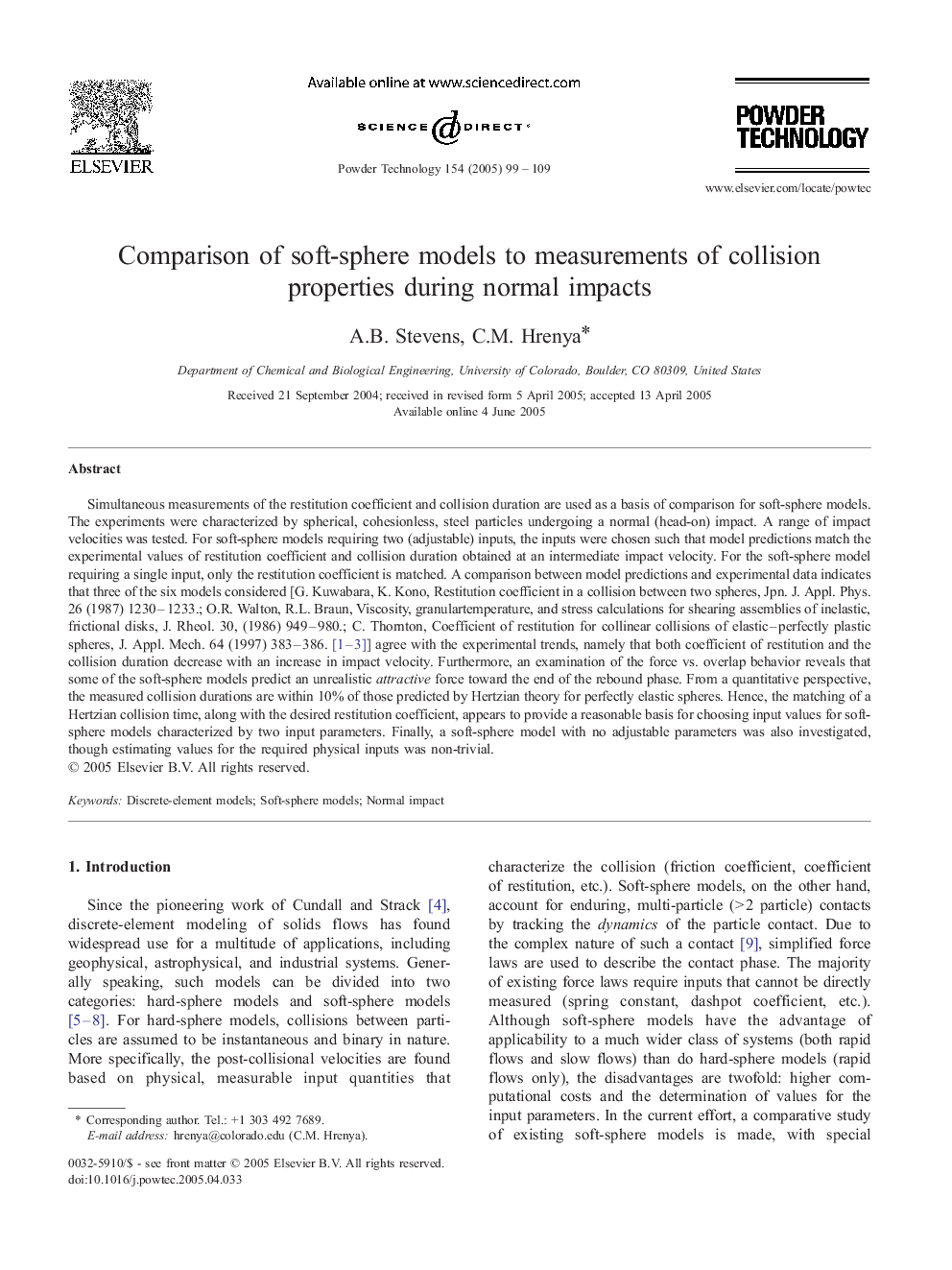| Article ID | Journal | Published Year | Pages | File Type |
|---|---|---|---|---|
| 9636502 | Powder Technology | 2005 | 11 Pages |
Abstract
Simultaneous measurements of the restitution coefficient and collision duration are used as a basis of comparison for soft-sphere models. The experiments were characterized by spherical, cohesionless, steel particles undergoing a normal (head-on) impact. A range of impact velocities was tested. For soft-sphere models requiring two (adjustable) inputs, the inputs were chosen such that model predictions match the experimental values of restitution coefficient and collision duration obtained at an intermediate impact velocity. For the soft-sphere model requiring a single input, only the restitution coefficient is matched. A comparison between model predictions and experimental data indicates that three of the six models considered [G. Kuwabara, K. Kono, Restitution coefficient in a collision between two spheres, Jpn. J. Appl. Phys. 26 (1987) 1230-1233.; O.R. Walton, R.L. Braun, Viscosity, granular-temperature, and stress calculations for shearing assemblies of inelastic, frictional disks, J. Rheol. 30, (1986) 949-980.; C. Thornton, Coefficient of restitution for collinear collisions of elastic-perfectly plastic spheres, J. Appl. Mech. 64 (1997) 383-386. [1], [2], [3]] agree with the experimental trends, namely that both coefficient of restitution and the collision duration decrease with an increase in impact velocity. Furthermore, an examination of the force vs. overlap behavior reveals that some of the soft-sphere models predict an unrealistic attractive force toward the end of the rebound phase. From a quantitative perspective, the measured collision durations are within 10% of those predicted by Hertzian theory for perfectly elastic spheres. Hence, the matching of a Hertzian collision time, along with the desired restitution coefficient, appears to provide a reasonable basis for choosing input values for soft-sphere models characterized by two input parameters. Finally, a soft-sphere model with no adjustable parameters was also investigated, though estimating values for the required physical inputs was non-trivial.
Keywords
Related Topics
Physical Sciences and Engineering
Chemical Engineering
Chemical Engineering (General)
Authors
A.B. Stevens, C.M. Hrenya,
